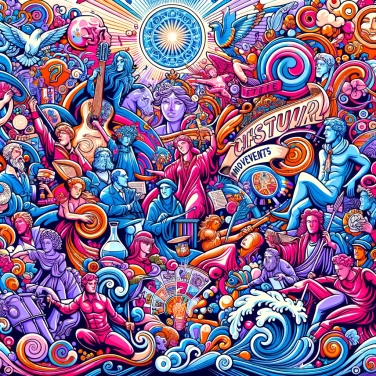Fashion trends change quickly due to the influence of culture, technology, media, and social movements, which create a constant demand for novelty and individual expression in the fashion industry.

Social media platforms like Instagram, TikTok, or Pinterest clearly accelerate the pace of fashion trends. With photos or videos shared in real-time, a cool outfit seen today on a celebrity or an influencer can become tomorrow's must-have trend. These influencers, who have thousands or even millions of followers, play a significant role: their popularity allows them to easily dictate what is cool, trendy, or outdated in just a few posts. As a result, brands jump at the chance to collaborate with them and boost their sales, further fueling a fast-paced cycle of trends. This phenomenon also pushes users to constantly seek novelty to stay up to date, greatly increasing the speed at which fashions appear and then disappear.
The textile industry rests on a simple principle: regularly pushing to buy new. This is called planned obsolescence, but in the form of clothing. Brands deliberately renew their collections very quickly to create a permanent impression that it’s necessary to change your wardrobe. This is referred to as fast fashion, a logic where quantity takes precedence over quality, generating enormous profit margins. Production costs are minimized by manufacturing in the cheapest locations, often in mass, and then the clothes are sold off quickly through frequent promotions or limited editions. As a result, we often buy more than we actually need. Behind this frantic pace, there is a multiplication of fashion seasons: it used to be winter-summer, but now some brands release up to 20 collections a year. In this way, stores constantly give the impression of having something new, so we often return to shop.
With the opening of cultural borders, we are constantly receiving new clothing influences from around the world. Today, many trends arise directly from the meeting of styles from other countries: Japanese streetwear, Scandinavian minimalism, or Italian casual elegance, for example. Each culture brings its own codes that we quickly reinterpret in our daily lives. This global melting pot pushes us to constantly refresh our wardrobes with hybrid, original, and clearly diverse styles. Let's not forget that our ongoing exchanges on an international stage also facilitate the rapid integration of these influences into major clothing chains.
Today, what we wear has become a way to show who we are, or at least who we would like to be. Today's consumers want to be unique: they are constantly seeking to express their personal identity. As a result, they become highly sensitive to the trends that align with their values and individual tastes. They quickly switch from one brand to another and from one style to another based on their current desires. This pushes the fashion industry to accelerate its pace to satisfy this constant thirst for novelty. Clothing becomes less about practical needs and more about the personal message sent to others. Indicating which social group we belong to, asserting our beliefs, or simply showing that we are up to date with style: this is what consumers are looking for today.
Technological advancements are clearly accelerating the pace of clothing changes. Today, thanks to computer-aided design (CAD) software, brands can create and modify entire collections in just a few clicks. The days of waiting weeks are over: 3D printers now produce prototypes in a matter of hours. These innovations significantly shorten the time between the idea and its shelf availability, thereby boosting the phenomenon of fast fashion. Another major innovation is on-demand manufacturing technology. Instead of mass-producing items that no one wants, some brands wait for consumer orders to manufacture, reducing lead times and limiting stock. As a result, new products are paraded in front of our eyes at a frantic pace.
Every second, the equivalent of an entire garbage truck full of clothes is thrown away or destroyed around the world, highlighting the alarming acceleration of the fashion cycle in recent decades.
On average, a fast fashion collection can go from concept to store display in just two weeks, whereas it used to take several months or even an entire season.
The color of the year selected annually by Pantone has a significant impact on fashion trends and directly influences the choices of stylists, brands, and consumers.
Until the 19th century, it was common to wear the same clothes for years, even passing them down from one generation to another: the idea of rapidly changing fashions is historically recent.
Yes, fast fashion relies on low prices and rapid turnover of collections. This encourages consumers to regularly purchase new items, thereby decreasing the lifespan of fashion styles.
Technological advancements enable more efficient, faster, and personalized manufacturing processes. Innovative materials and 3D printing lead to original and unique clothing, thereby accelerating the pace of changes in fashion.
Even though it is impossible to predict exactly all future trends, strategic monitoring and the analysis of sociocultural behaviors help industry experts anticipate certain stylistic developments and quickly propose new collections.
Influencers use social media to constantly showcase new trends to their followers, thereby accelerating the pace of adoption and rejection of fashion styles. Their high visibility compels brands to frequently create new collections to remain appealing.
Fashion often operates in cycles: many styles return, evoking nostalgia and reinterpreting past trends with a modern twist. Designers and brands regularly take advantage of these cycles to bring back well-known styles.

0% of respondents passed this quiz completely!
Question 1/5